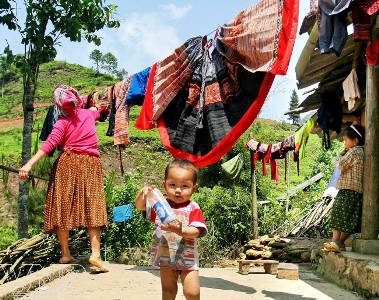>> Poverty reduction planning needs a wider view
>> NA says poverty reduction programmes inefficient
A Danish-funded programme has helped to cut poverty rate in five targeted mountainous provinces in Vietnam from 25% in 2007 to 10%-12%.

Poverty rate among ethnic minorities remains high
The Agriculture and Rural Development Sector Programme Support (ARD SPS), with assets totaling USD42 million, has a cooperation agreement between the Danish and Vietnamese governments. The programme was aimed at reducing poverty in the upland areas of Vietnam, particularly among ethnic minorities.
The programme has been implemented in five mountainous provinces: Dien Bien, Lai Chau, Lao Cai, Dak Lak and Dak Nong. It has also provided support to two central agencies under the Ministry of Agriculture and Rural Development between 2007 and 2013.
“More than one million farmers and their families in these five provinces have benefited from activities supported by the programme. They will continue to benefit from the infrastructure and pilot models started with funding from the programme,” said Danish Ambassador to Vietnam John Nielsen, at the programme’s commencement ceremony today, December 16, in Hanoi.
The programme has two components: A provincial component for which support is provided to the agricultural and rural development plans in five targeted provinces; and a central component, which supports research on the effects of poverty on rural livelihood possible strategies to mitigate those effects in said provinces.
After six years at least 70,000 poor households in mountainous areas of these provinces have improved food security and increased and stabilised incomes.
At least 50,000 poor households have reported a 30% increase in income gained from production of traditional products and agricultural goods. More than 10,000 hectares of forestland have been allocated to rural households or communities and properly managed.
The programme has also helped to set up several other pilot models, including rattan and bamboo knitting, blue dragon growing, tea and coffee production and rice cultivation in several localities, targeting hundreds of poor and closely poor households. The majority of benefactors were people from ethnic minorities.
According to a survey conducted by Upland Areas Livelihood, funded by the programme, in 2012, 22% of residents in Vietnam’s rural areas lived under the poverty line, as defined by the Ministry of Labour, Invalid and Social Affairs.
While the poverty rate in rural areas in lowland areas was at an average of 10%, the rate was over 50% in mountainous areas.
The poverty rate among the popular King people was reduced to only 5% last year, but the rate of ethnic minority groups remained rather high, fluctuating between 60% and 70%.

Leave your comment on this story